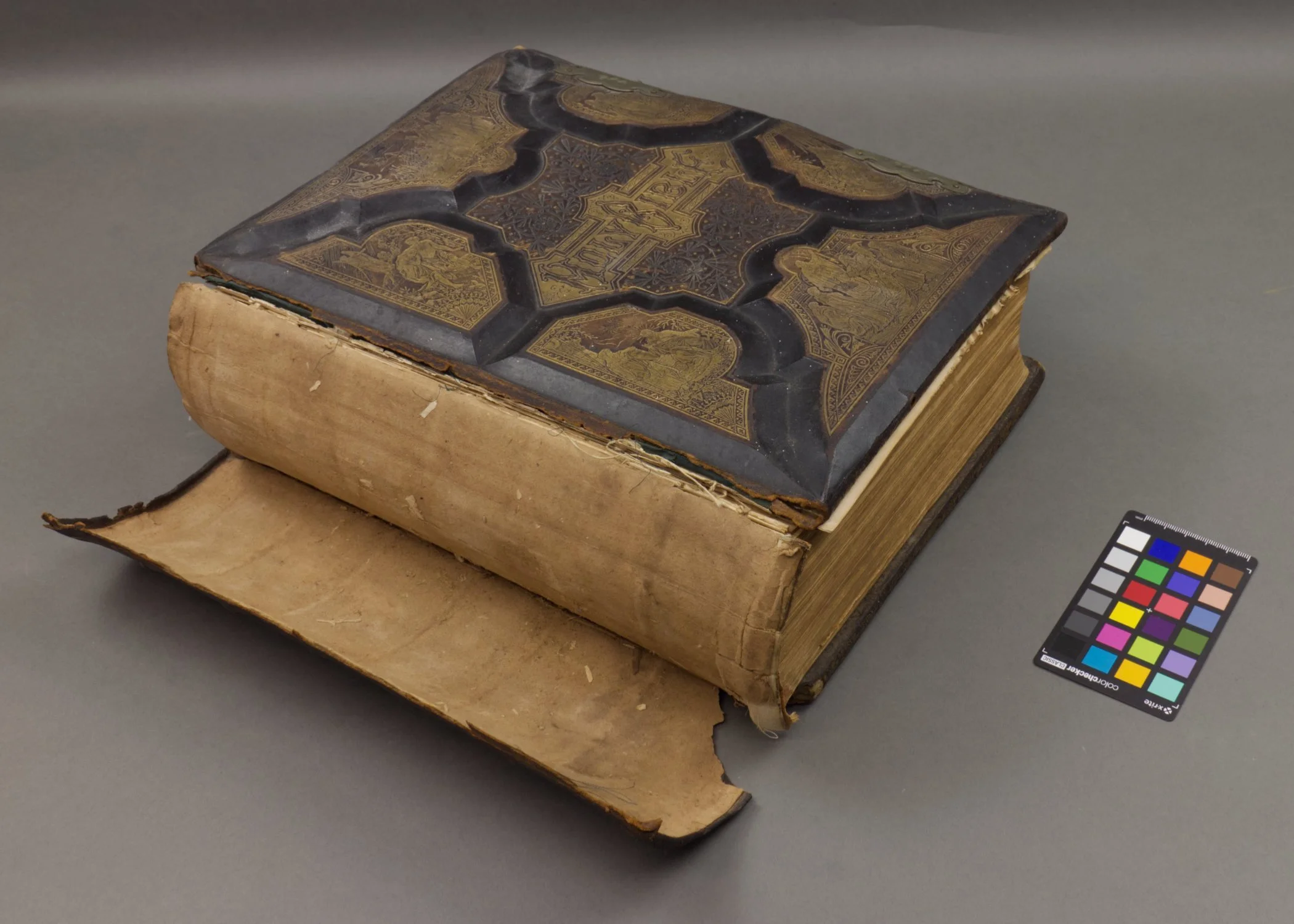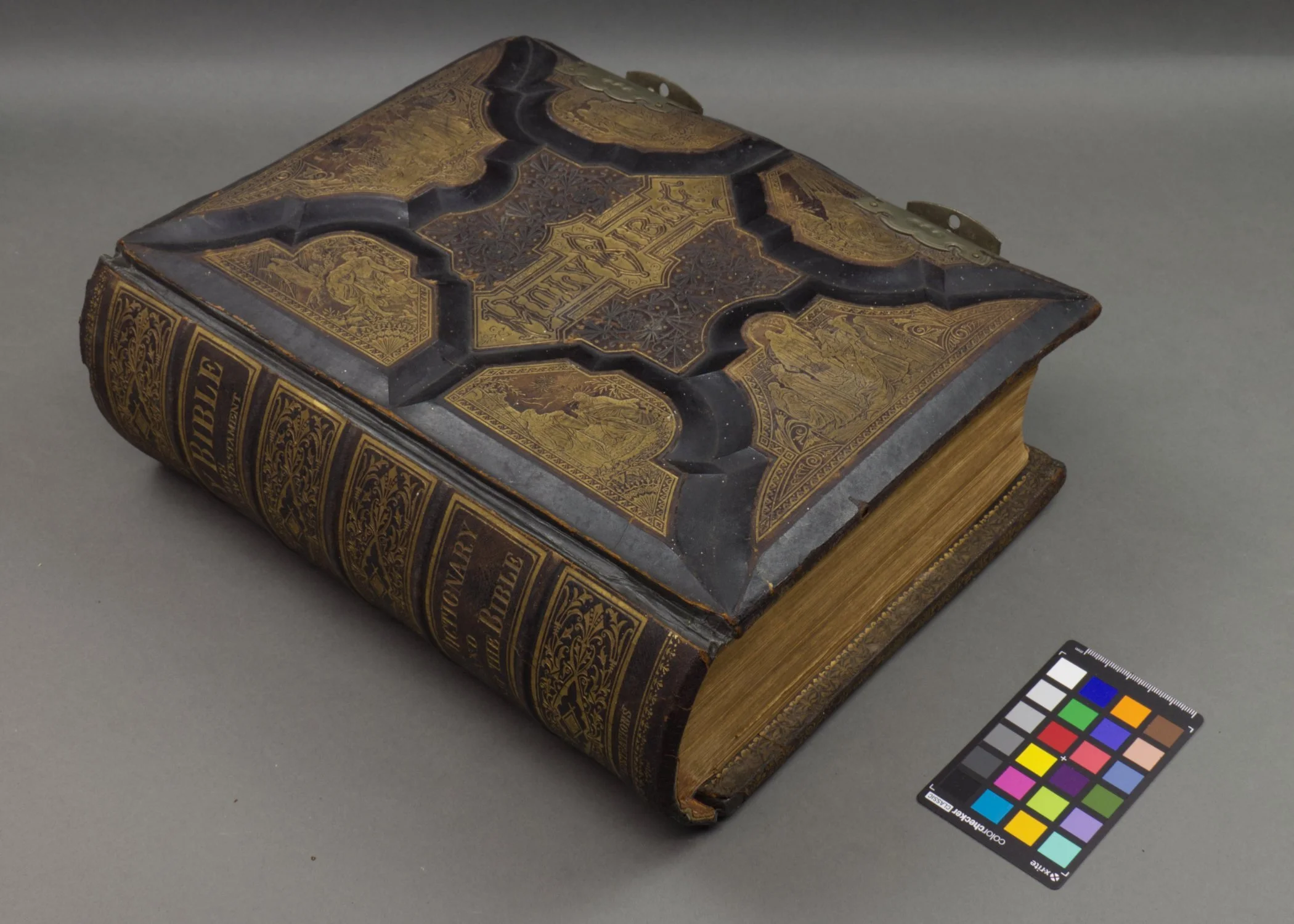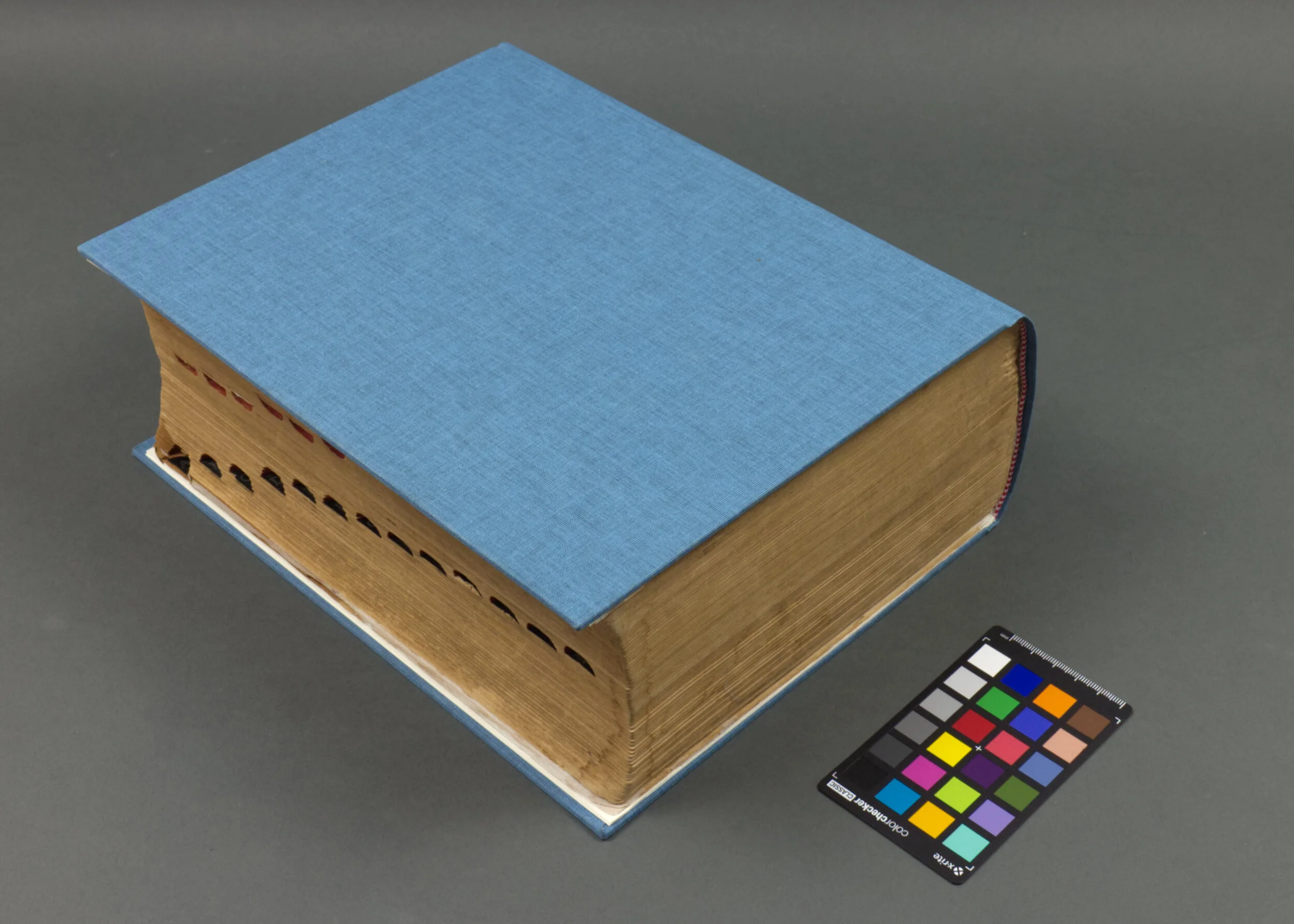
Book Conservation
Repairing books, whether it is a 16th century text or a 20th century Bible, is always a unique process. This can include but is not limited to cleaning, tear mending, tape removal, reattaching covers, new covers, new spines, or stamping. All with the goal of improving the access and usability of these items.
Leather Reback
The previous reback failed and due to the poor quality leather used was turning to powder. The powder in turn got on any surface the book touched as well as other books around it. Therefore, the reback leather was completely removed and a reback was completed with new leather. The new spine labels were tooled with gold leaf.
Bible Leather Reback
This 1793 Bible had been previously repaired with the covers sewn through to keep them attached. In the before pictures you can see the brown cloth this stitching was covered with along the spine. These previous repairs were removed to allow for holistic new repairs. The corners of both boards were worn away and exposing the pages of the text. They were built back up and shaped. Then the edges of the boards were covered in new leather. The boards were reattached to the text using a strong archival cotton fabric. Next a leather reback, a new leather spine, was adhered into place. Finally, the original leather spine was adhered in place atop the new leather.
Japanese Paper Reback
The cloth joint of the front cover was split. This was repaired by completing a Japanese paper reback, toning the Japanese paper so that it blends in with the original spine.
Japanese Paper Reback
The spine and covers were separated from the text when this book arrived. The boards were reattached with cotton cloth and everything was covered up with a toned Japanese paper reback.
Cloth Reback
The spine and both covers were fully separated from the text. The brass frame around both boards was distorted and the covering material on both boards was chipped and had losses. These losses were filled with sympathetically toned Japanese paper. The brass frames were reshaped to fit back onto the boards. A reback was completed with cotton cloth to mimic the original and then the original spine was adhered back into place.
New Leather Case
This pocket dictionary had a worn and deteriorated case. The decision was made not to save the case, but to save the tooling. The new binding emulates the appearance and feel of the original while being made of much sturdier long lasting materials.
New Cloth Case
This well-loved dictionary came in without a binding and the pages at the front in the back detached and torn. The pages were repaired using Japanese paper and wheat starch paste and were sewn back to the text. Then a new case was made and a spine label with the book’s nickname “My Brain” was printed and attached.






















